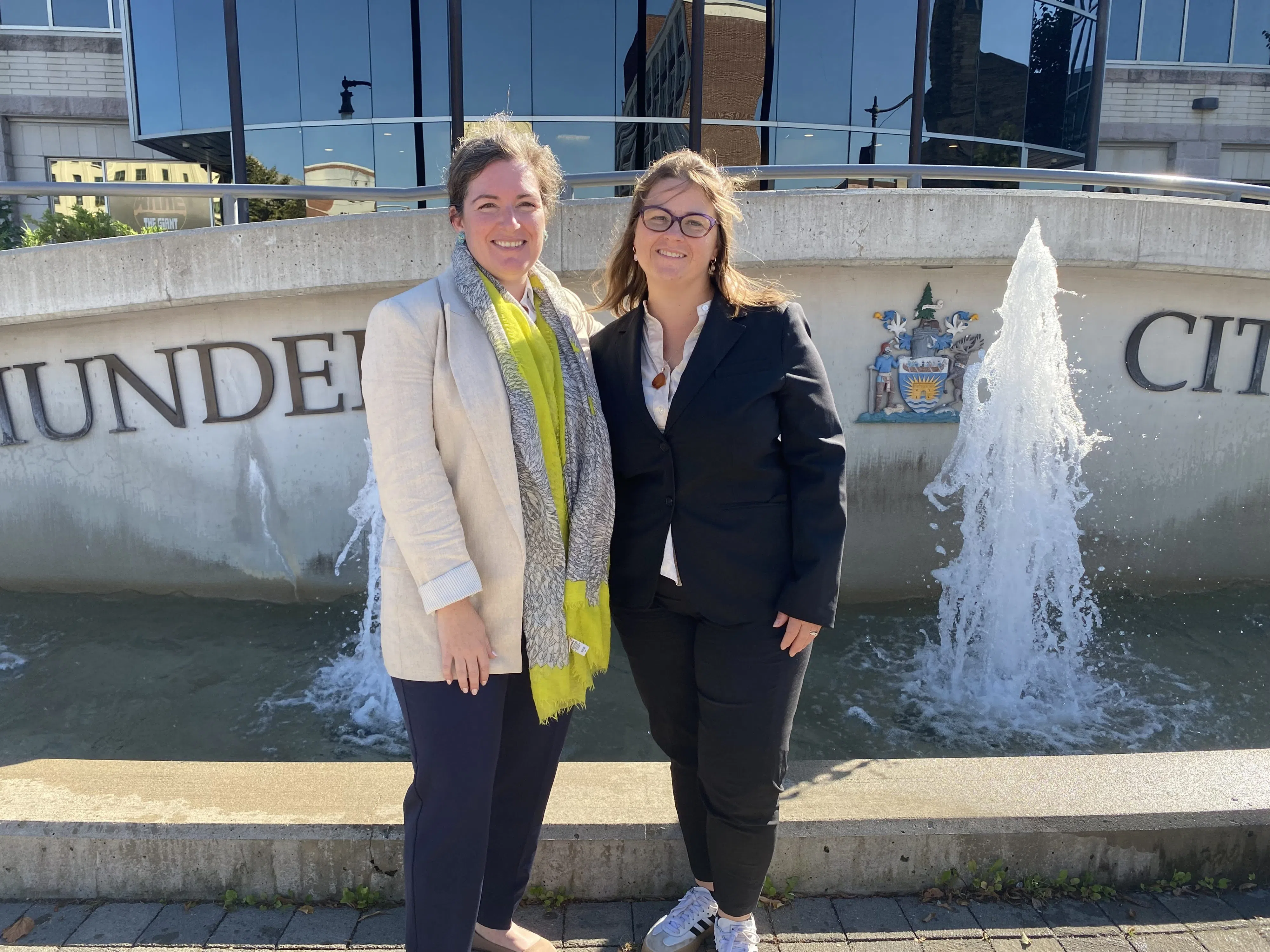
Caitlin Burley and Joanne Jacyk ahead of their deputation at Thunder Bay city council on behalf of the NWMO
The Nuclear Waste Management Organization maintained its commitment to safety at a city council meeting in the region.
The organization was at Thunder Bay Council Monday night in response to a deputation made by We the Nuclear Free North on August 26.
“The group did not have their facts straight,” said the NWMO in their request to speak at council. “The NWMO would like the opportunity to present fact-based information to Council regarding this important decision.”
A rally against nuclear waste storage in the region was held ahead of We the Nuclear Free North’s deputation, and a second one was held before the NWMO spoke to council.
During the discussion at council the NWMO sought to disprove common misinformation.
“Used nuclear fuel or high-level nuclear waste is a solid ceramic material,” explained the NWMO’s Site Director in Ignace, Joanne Jacyk. “If the North is selected, it would not be transported for another 20 years, and it will only come if the consensus among regulators and scientists is that it is safe, the bar is extremely high.”
Used nuclear fuel waste is a solid, not a liquid or gas and it is not combustible, nor can it be spilled.
Transportation is a concern shared by many of the anti-nuclear storage organizations, but the NWMO looked to highlight that it shouldn’t be.
“When transportation begins in the 2040s, we would be looking at about 650 shipments a year, or about two to three shipments a day,” explained Director of Strategic Programs and Transportation, Caitlin Burley. “Based on data from MTO for a stretch of Hwy. 17, traffic volumes are about 2000 vehicles per day and about 1000 trucks per day, even when including the empty return shipments, this is less than half a percent of the total truck volumes in a year.”
Although the trucks would make up next to nothing in terms of traffic volume, there are still concerns about the radioactivity of shipments.
“We’re exposed to sources of radiation every day, and there are government-set limits that tell us how much we can be exposed to safely,” said Burley.
“Even if you were to stand at the side of the road for every single shipment that went by in a year, you would be exposed to less radiation than eating a banana, and that would be orders of magnitude lower than getting a dental X-ray, or getting on a flight to Winnipeg.”
Something stressed by the NWMO was that there are already equally as dangerous shipments on our roads every day.
“So if you look at the kind of overall picture of the level of hazard that you’re transporting, I think it’s fair to say that there are things on our roads every day that are more hazardous, that pose a bigger risk to the public,” added Jacyk. “So it would be interesting to me on the logic on why you would differentiate this material versus other materials that are on the highway (already) that may pose as big or bigger risks.”
Overall safety was not the only concern that the organization set out to address.
“There has been a lot of discussion in the northwestern Ontario region recently about the option of managing nuclear waste closer to where it is generated,” said Jacyk. “We need to complete the site selection process to ensure that we have willing host communities. Siting a facility arbitrarily near an existing nuclear site would disregard the voices of nearby communities and First Nations.”
She added that for the project to proceed Wabigoon Lake Ojibway Nation will need to express their willingness to have a site in Ignace.
This comes as there is strong support from a town in the region to become the possible home of Canada’s first underground nuclear storage unit.
Ignace town council voted to continue showing interest in the $26-billion project in July, following a community “willingness survey” revealed more than 77 per cent of voters want to move forward.



